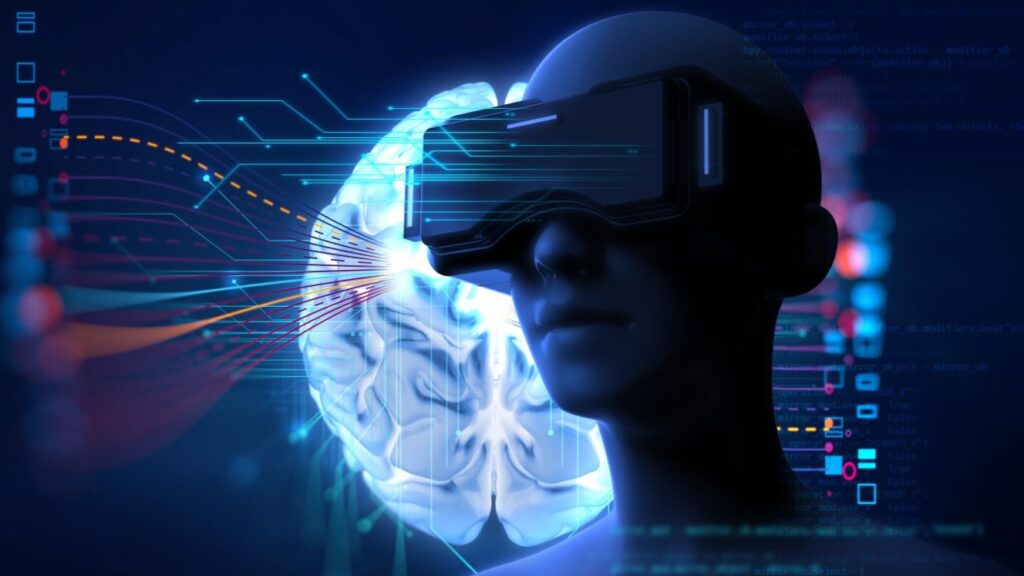Glossy campaigns, captivating TV adverts, informative blog posts, irresistible email subject lines and far-reaching social media networking; have all revolutionised the marketing space. What once relied upon salesmen and word of mouth, has now become a digital phenomenon with the capacity to reach consumers all over the world.
Digital marketing has undergone a further transformation with the rise of Virtual Reality. VR in marketing is not the future, it’s very much the present. As of 2018, 78% of consumers were familiar with VR technology. And if you’ve never experienced the world of VR – the chances are, you soon will. Almost 75% of the worlds renowned brands have integrated VR into their marketing strategy.
What is VR?
Virtual reality (VR) is the computer-generated simulation of a chosen environment in which a user can interact with 3D objects, landscape and lighting using electronic devices, such as special headsets with a screen or gloves fitted with sensors. Such technology has been paramount to effective on the job training, entertainment and is now breaking into the marketing mix.
Advanced VR technology enables people to see, hear, feel and smell digitally generated content that feels incredibly close to the real thing. When our senses are engaged, we, as consumers, are more emotionally invested in an experience. VR makes it possible to create unforgettable experiences.
The chart above shows the forecast level of shipments of augmented and virtual reality devices between 2018 – 2022 (Statista). The VR market is forecast to see a near to 300% increase in the demand for VR devices over the next couple of years.
VR as a Marketing Strategy
Its a powerful marketing tool, with the most obvious use case being its capacity to allow consumers to get up close and personal with products and even services. It’s transformational in as far as enhancing buyer awareness, accelerating the purchasing process, personalising choices to buyers and significantly amplifying user experience – to name a few things.
Virtual reality marketing sees brands promoting themselves, their products, prices and news using virtual and augmented reality technology to deliver the content. VR marketing is predominantly visual and is sometimes multi-sensory, depending on the device and software. A completely immersive, VR experience has the ability to engulf consumers into a new digital world where they can see and interact with a brands product or service.
The general aim of any successful marketing strategy is to provide information and context on a brand, in the most appealing way to prompt prospective customers into making a purchase, signing up, subscribing, or donating. And VR comes with the capacity to provide the most engaging content, in whichever appealing light the brand and developer wish. Ultimately, it’s the pinnacle of marketing.
Sensory Marketing with VR
Sensory marketing is traditionally associated with engaging the senses of in-store customers. Think smells, textures, music and complementary tasties. But what if marketers were able to appeal to the sense of sight, smell, touch, hearing and taste in a digital context?
A visual sensory experience is arguably the most important way to connect with consumers both in-store and online. Think about it, consumers are almost always more likely to make a purchase on the product they can see, as opposed to the one they can’t. Likewise, services should be understood thorough information, infographics, and demonstrations – all of which is taken in through vision.
Emerging technologies like artificial intelligence (AI), virtual and augmented reality have helped to create more interactive, immersive and engaging online shopping experiences. Augmented reality, for example, superimposes digital content over the screen of a real-life capturing. This can be engaging and unique but somewhat limits the interactivity and immersive experience of the user.
VR technology, not only lets users enter into a new world to see a digital environment, but through VR sensory gloves, feel different objects. Teslasuit, introduced a glove that can let users feel virtual textures and gather biometric data. The device combines several technologies to create the sensation of touch, capture the users’ motions and record pulses. When coupled with other VR headsets, the immersive VR experience is unparalleled. At around $5,000, these gloves aren’t necessarily a home headset companion. However, they shouldn’t be ruled out as a marketing investment for brands who want to take their strategy to the next level.
Sensory Product Experiences
Marketing is all about engaging the senses. Walk into a coffee shop, smell the burning beans, see the cosy decor, feel the soft couches, taste the homemade bake and you’ll probably return. Or let’s say you’re developing a new marquee offering and you want to generate some buzz before launching. VR lets you take your customers on that journey. Invite them to watch your story unfold from idea inception to final product design. And its a two-way street – by engaging your customers from the getgo, you could receive valuable feedback at all points of the production process.
More than ever, consumers are seeking out VR brand experiences. As more enter the marketing scene, ad blockers and rolling out clicky ads simply won’t cut it. The dynamic between brands and consumers has been changed by VR, and it now revolves around experiences.
Historically, the best way to persuade someone that your product or service trumps your competitors is by showing them. In-store experiences are easy to pull off but as the online shopping trend grows stronger, getting your target audience to your physical store can be a tough challenge. VR can help. When Volvo launched its VR test-drive for its XC90 SUV, it was massively successful in creating a far more compelling experience than hearing a salesman talk about the features of the car.
The marketing mix is all about compelling information combined with elements that link a brand with excitement, wonder and personalisation. Consumers come away feeling more connected with brands they’ve had vivid interactions with through VR.
